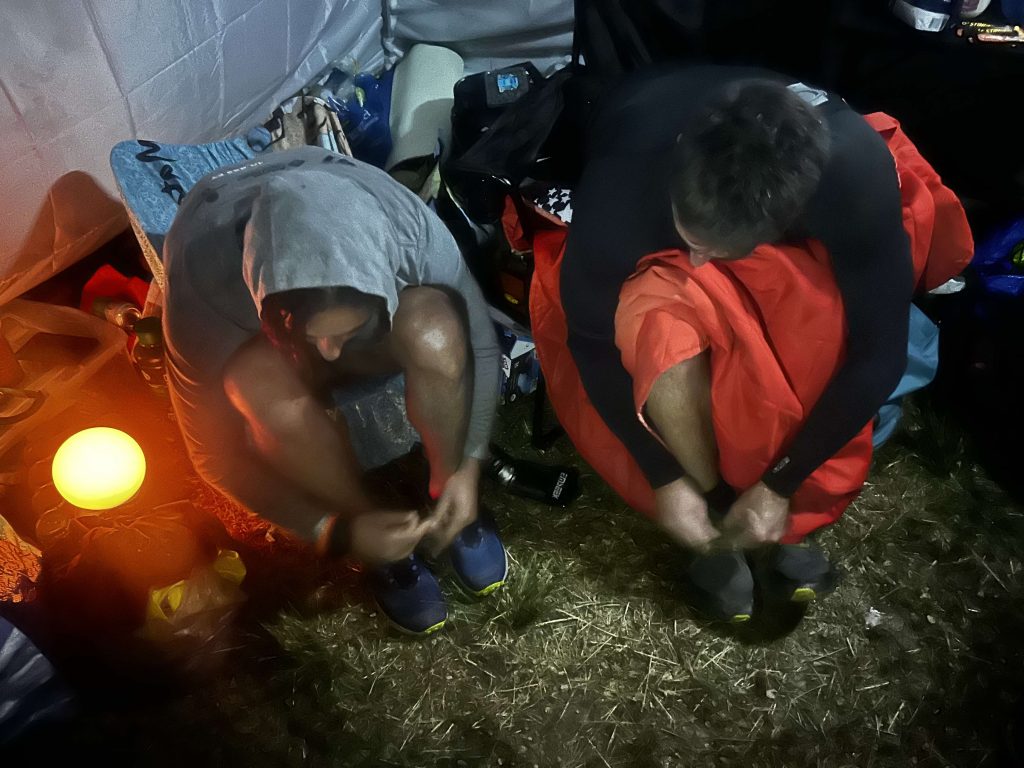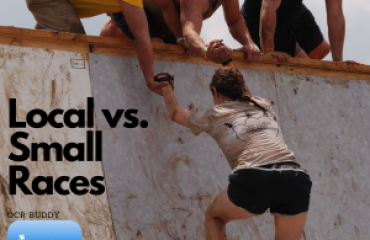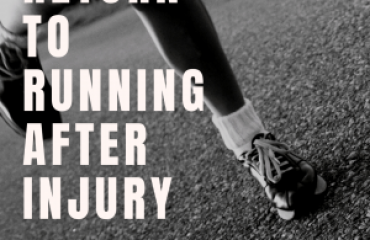
As the chill of a November night settled over Florida, the World’s Toughest Mudder commenced, promising to test not just the endurance of its competitors but the resilience of its dedicated crews. Amid the electric atmosphere, charged with a blend of excitement and trepidation, crew members prepared to support their racers through a grueling 24-hour ordeal. Navigating through the whirlwind of mud, sweat, and relentless determination, these crew members became essential lifelines, attending to every need from hydration to encouragement. Their experience extended beyond mere support, embodying a crucial role in the athletes’ journey through one of the toughest endurance challenges in the world.
What is it like to be one of the crew? OCR Buddy Ambassador Mariel Pauline shares her experiences in this edition of 10 Questions.
First off, introduce yourself and tell us how you got into OCR.
Mariel Pauline – casual ultra runner, sometimes OCR rockstar, home-basing out of St. Pete, Florida where I am the marketing coordinator for Run Unlimited – FL’s only dedicated treadmill studio. I did a brief stint as a Killington local, spending most days trail running until sunset, and got curious around Spartan Race in 2021 after a friend said I’d never be able to finish more than a Sprint. I fell in love with the initial challenge, and (as my focus shifted to ultra running) keep coming back for the OCR community.
So you were just at WTM working in the pits. Who did you put for and how did that come about?
I had the opportunity to act as Crew Chief for Noel Medina and Nick Klingensmith. Nick had initially asked me over the summer if I’d be interested in helping along with his wife Lisa, and I jumped on the opportunity because we have a pretty solid understanding of how to support each other during times of absolute WTFdom. Helping Noel was more of a last minute thing, however he and I have been in conversation pretty seriously over the past few months about how to optimize performance under times of extreme duress, so I was happy to be able to step in and put what we’ve been talking about for overall endurance training into practice.
Two parts to this question, what was the preparation for this event, both for yourself and those you were putting for?
In addition to the massive amount of work both Nick and Noel put in physically, the guys had their mental game on point. I think it’s fair to say both of them trained all year to go out there and hit WTM as hard as they could, so it was really on me to be as sharp as possible to help get them to their goals.

To adequately prepare to crew the guys, I spent time talking with each and learning their needs. It was important for me to get as many details as possible to plan for any eventuality – from what fuel they wanted and when, to what socks at what hour, mantras that work (and definitely don’t work). We also had many discussions about practical goals – mileage, time in pit, obstacle completion, etc – and what it would / could look like if those goals were no longer obtainable. Once I had as much information as I could, I wrote out a plan on my phone to have as a reference point in the middle of the race. We also were exceptionally smart about pit selection. I received intel on where More Heart Than Scars was going to be, and we were able to get a space that was relatively close to them, as well as across from Mudderhorn – so I was able to be in-sync with close friends throughout the night, while also keeping an eye on when the guys were about to head into the last two obstacles of each lap.
As you got to the event, what was involved in the set up. What did you do when you got there and what was involved in the setup of your tent and your area?
Nick made things exceptionally easy and already had a pop up tent and table for us to use. We arrived on Friday to set the tent and table, as well as orient ourselves with the pit and general flow of the festival space. Saturday we intentionally arrived with a large cushion of time in order to set up. We staged all race fuel on the table, shoes and clothes on either side of the tent – with chairs, lighting, and foot care kits easily accessible. I spent time walking the path from the chute to the tent, planning the most efficient routes. I also reviewed the fueling plan for the guys – making sure I knew exactly what we were doing and when. We made friends with our neighbours, and got ready for an exciting 24h.
Now you are set up, what did you do and how did you get ready for the race? How did you help your athletes get their final preparations for the event.
My guys were easy. The time before the race was all about letting the guys zone-in individually, making sure they had what they needed for the Sprint lap, and not letting the excitement of the day take over. It was a typical Florida day – hot and buggy – so not letting the guys dehydrate before they started was priority, as was spraying our tent area to prevent any unfortunate bites as the day went on. Making sure the guys were fed, laughing, feeling groovy, and ready to kick ass was the primary mission – so we were just keeping it light, sweet, and silly.
In your setup and all that you did up your the beginning of the race, what would you change and what advice would you give to people who will be in the pits going forward.
Start planning at least two months before. Order everything early. Do your shopping no later than the weekend before. Remember that you also have to take care of yourself, so make a plan for your food and hydration too. Get to know your athletes as in-depth as possible beforehand. You are their brain cells on race day.
Things I will do differently next year – I definitely used WTM being local as an excuse to not get as organized as I typically would have. I brought *everything*, including yoga mats, blankets, pillows, disco balls, lanterns, and the like. Everything was helpful in creating a vibe that was welcoming and focused for the guys – but execution could have been better. Front load your takedown – I could have used time more wisely when the guys were on laps to start reloading the car and organizing for take-home, but everything is a learning experience.
The race starts. What did you do as you prepared for your athletes to eventually get back? What did you do with shoes, socks, wetsuit, food, nutrition and anything else that you had with yourself?
I knew the first lap (the Sprint lap) would be a breeze for the guys, so we planned prior with what nutrition and hydration would be needed. Noel and I got into a solid flow, with him calling out any changes to the fueling plan and needs as he headed out for a lap, so I would be prepared for them as he came back around. Nick and I were also focused and locked in, keeping track of his blood sugar and arm mobility. The priority after sunset became keeping the feet decent and the body warm. For footcare, once the shoes and insoles were switched out, I attempted to dry them so they’d be good to go for future laps. A friend, Jeff Torres, came in clutch with handwarmers for the guys to put along their midline to rewarm, and we changed Nick into dry clothes and eventually his neoprene top. Noel we did only sock changes and threw a sweatshirt on him during an extended pit break.

What is it like when the athletes come in. Go through those moments. What do they want? What do they need? How much time do you have? What is the stress level like? What are those few minutes like?
The goal is to kick the athletes out of the pit as fast as possible. It’s so important to be as prepared as possible with everything your athletes need, and to be anticipating those needs. It was helpful keeping track of the anticipated time per lap, increasing the anticipated time as more obstacles opened, so we knew when to be waiting by the last obstacles to cheer them in and replace fueling & hydration. With my two athletes, their needs and timing differed – so it was crucial to have my phone keeping track of both, using separate timers, and creating seperate lists of needs and wants as they evolved. The stress level was high – but I actively grounded myself the second I saw my athletes crossing into the last obstacles of the lap, so I wouldn’t project my energy onto their race, and kept the moments light and focused. Each pit time is different, and eventually the choice was made to take longer pits by both my athletes in order to recoup through night ops. Even those longer breaks were stressful, because we were rewarming, and trying to not make the breaks longer than they needed be. I definatley took some time for myself after sending the guys off each lap to refocus and get ready for the next go-around.
What type of questions do you ask? What’s the conversation like? Do you ask question, do you distract or talk strategy?
Earlier there was strategy, as the race went on – no conversation, just needs. What fuel in what bottle, when, and what form. One of my athletes had initially asked for updates on their splits, and as the night went on, didn’t want to hear anything. It was helpful for me to shut up, hold space, and just respond to their needs. In those moments – it isn’t about you, it’s about giving everything you have of yourself to them, to make sure your athlete hits their goals.
What did you do between laps? Once the athletes headed out for the lap, what did you do, how did you prepare for the next lap?
Drank a lot of sparkling water, then coffee, then double fisted both for a few hours. Ate some snax. Hung out by Mudderhorn and cheered for athletes. Before that though, I went and got the fuel ready for the next lap. One of my athletes was averaging between 45min – 1h per lap, so I didn’t want to have him waiting, and his needs were rather specific, so it was easiest for me to prepare all of that while the needs were still fresh in my head. I also hung out with my pit neighbors, supporting surrounding athletes with footcare needs and emotional support, and tried to keep things organized and light.
Tell us about the pits. What’s the vibe like, the people, the camaraderie and the overall feelings? Put all of that into words for us.
Oh man… there’s no vibe like it. It felt like we were all unified in one mission – the success of our athletes – and folx acted accordingly. I feel like you definitely start to recognize some of the same people, and everyone was so supportive – from sharing supplies to reminding others to eat, to offering a kind word during the 3am scaries – I am deeply appreciative of everyone who I had the immense privilege of sharing the pit with.

Tell us some things that you saw in the pits? What were some things that made you say “wow” and tell us about the amazing people that wore the blue vests?
Hmm… well, first and foremost, shoutout to More Heart Than Scars. Joey and the team run a tight ship, and in a moment of “oh shoot, where are my toenail clippers”, they came in strong on the assist. Shoutout as well to the brilliant volunteers of the hospitality and orphan tents, keeping athletes & crew stoked and rocking all night, as well as the volunteers running the fire pit. The fire pit conversations were like no other, with athletes and crew supporting each other – through cramps, exhaustion, remembering their “why” – the whole gamut of human emotions. I also was incredibly impressed by the organization of many other pit crew members – including using caddies for their athletes’ supplies. Lots of helpful tidbits to take with me next time!
When the athlete is done, tell us the process both for you and the athlete? he mental side of finishing and coming down. What is that whole process like and what did you have to do within the pits?
I was blessed to have two very different, but very wholesome finishes for both my athletes. One called it earlier than originally planned, but recognizing it was the right choice, and there was no major sadness. The other pushed to far surpass his mileage PR. There were tears on my end, for both athletes, privately. Once I could tell the first athlete had called it mentally, I walked away and had my moment, before coming back to check in and officially accept the call. At that point, it was a lot of hugs and support, knowing he pushed way beyond his limits and would be going home with a huge accomplishment regardless. I checked in with him later that day, and I’m confident his 24h race journey has just begun.
With my second athlete, I was keeping a huge eye on the time, and after sending him out on what would be his last lap, I took a big walk to journal some reflections before starting to break down our pit area to make it easier after his finish. It really never gets any easier, sending out your athletes lap-to-lap, that terrifying “what if this is the last time, I officially have no control and have to trust them and the training”- moment. When I saw my athlete coming towards the last two obstacles after the starting line had closed, the tears came in a big way, and I walked away for a moment. It was about to be over, and both my athletes hit their goals with all limbs and most of their brain cells intact. There were immense feelings of pride and relief as I saw him crawl under Electroshock Therapy for the last time (unscathed all 15 laps!) and make his way over the finish line, where he sat and stayed for a while. The comedown on the ride home was… rough… and home was a lot of tea and I think we both passed out phone-in-hand.
Like any other event, the processing and integration comes in waves. Tidbits of details came, and are still coming. Beach the next day helped. Movement helps. And looking forward to the next!
Hard question. What would you do differently? What would you change? Looking back, what could you have done better for yourself.
Nothing. Everything. It all really comes down to planning. Working within the parameters of both my athletes making the exact same choices re: training, timing, etc, I would have focused more on creating “grab and go” toolkits for each athlete, had more extensive discussions about needs for immediately following the race, and had some discussions about how hard to press to get them out of the pit when the ADHD and exhaustion takes over. Definitely would have brought pizza and more iced coffee. Probably would have brought more lights and a rug for the floor of the tent.
What tips do you have for people in the pits? What items are essential? What do they need for themselves? Focus on the pits, what do all of the pit crew members need to have to survive.
Preparation! Preparation! Preparation! Get super annoying with your athletes before. Make all the lists and commit them to memory. Bring more insoles, sock, and shoe changes – nothing will ever be as good as a fresh pair. Google “how to be a rockstar Crew Chief”, and familiarize yourself with how to be completely selfless and a vessel to help empower your athlete to do their best work.
For yourself – plan two outfit changes. Bring toiletries, something for when it’s freezing overnight, an activity if you’re not in charge, and all the snacks. If you plan on sleeping, an eye mask and earplugs are a must. Bug spray, sunscreen, rain gear. Being in the pit is basically like competitive camping. Go wild.
Lastly, the floor is yours. What did I not ask you? What other information do you want to share. the floor is open to you.
Epic love to the entire WTM family for a brilliant event and thank you again to Nick and Noel for having me along for the ride. Xcelcior. Onward. Groovy.









